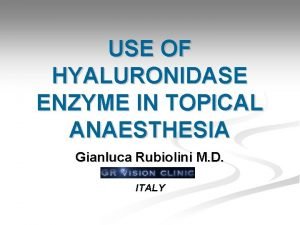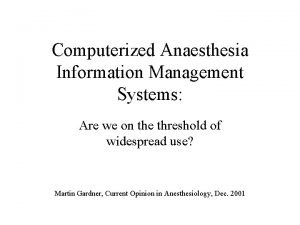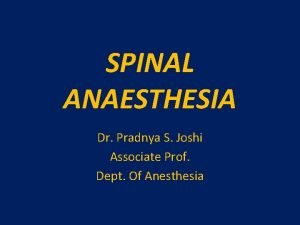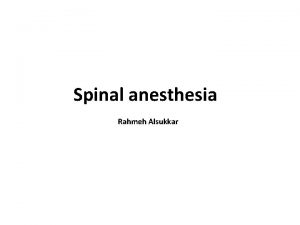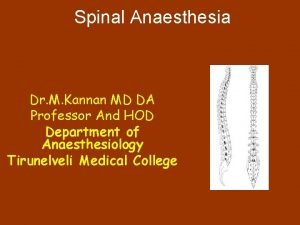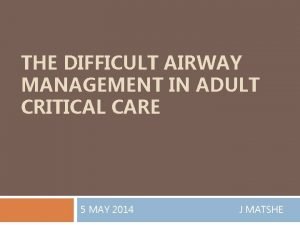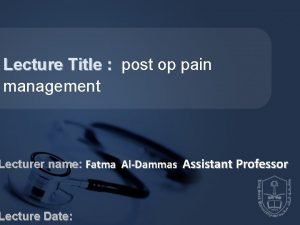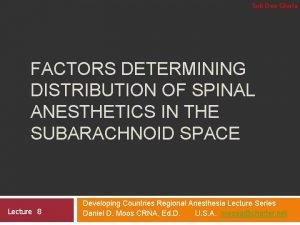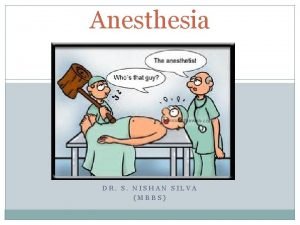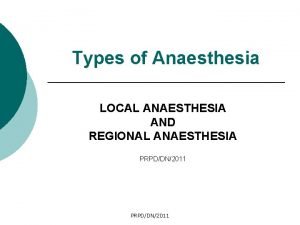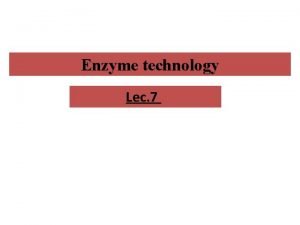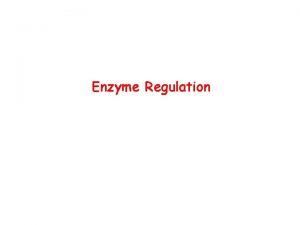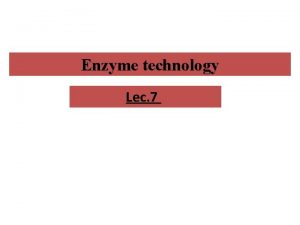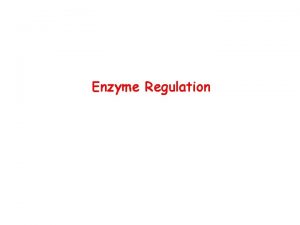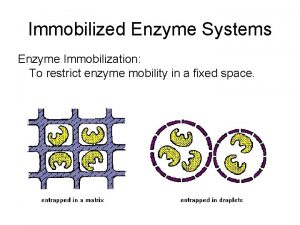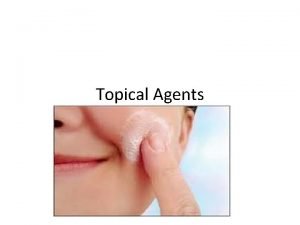USE OF HYALURONIDASE ENZYME IN TOPICAL ANAESTHESIA Gianluca












- Slides: 12

USE OF HYALURONIDASE ENZYME IN TOPICAL ANAESTHESIA Gianluca Rubiolini M. D. ITALY

FINANCIAL DISCLOSURE The Author has no financial interest in the companies that develop, produce and supply those drugs

Cararact surgery is the most common surgical procedure in ophthalmology An increasing number of procedures is performed with topical anaesthesia in 2006 ( 61% U. S. 40% EU ). Trends in topical anaesthesia: customizing or standardizing? OUR GOAL STANDARDIZE OUR “CUSTOM” TOPICAL ANAESTHESIA: we found a positive increase in efficacy and duration adding Hyaluronidase enzyme to Ropivacaine. OUR KNOWLEDGE None of these drugs were ever used for topical anaesthesia. Hyaluronidase enzyme should not be directly apply onto the cornea. UNAPPROVED USE Ropivacaine was never tested for topical use. OFF LABEL USE

MATERIALS AND METHODS 208 patients (Group A) Ropivacaine 7, 5% + Hyaluronidase enzime 30 U. I. 202 patients (Group B) Ropivacaine 10% + Hyaluronidase enzime 45 U. I 101 patients (Group C) Ropivacaine 7, 5% ( control group) 108 patients (Group D) Ropivacaine 10% control group) None of those groups had supplementary intracameral lidocaine as default. Some patients (165) had bilateral (non simultaneus) procedure. They were always tested with the same anaesthesia. Surgical procedures: Surgical time: PCO rate: all performed by the same surgeon: facochop + iol (Eyecryl 4 x 4 600, Biotech Vision Care ) from 6 minutes to 15 minutes. similar in all four groups ( min. 7% max 10%) 24 months follow up.

Technical aspects and education for anaesthetic mix preparation

Preop & postop data n Corneal Pachimetry: All 619 patients had 6 & 24 months post within 25± micron from preop. value Anterior segment : All 619 had no changes concerning morphology and functions of cornea iris/pupil and anterior sclera, IOP at 24 months post. op. No cases of endophthalmitis or non septic uveitis (TASS) n Endothelial cells count, 6 months post. op. : 594/619 patients had endothelial cell decrease within 12% from preop. count. 25 patients were not included because of the cataract ( very hard /ambroid). They had more than 12% endothelial cell density decrease.

Patient post op questionnaire QUESTION 1 No pain /discomfort : I could see lights 2 I felt light discomfort because of the lights/ touching sensation: no pain. Did you feel any discomfort /pain during 3 I had a lot of discomfort and sometimes pain: I the surgical couldn’t look at the lights. procedure (multiple 4 I had sharp pain : it was a terrible experience. choice) Maybe the anaesthesia didn’t work on me.

PATIENT FEEDBACK 1: NO PAIN 2: LIGHT DISCOMFORT 3 DISCOMFORT AND SOME PAIN 4: SHARP PAIN

PATIENT FEEDBACK PATIENTS WITH NO DISCOMFORT ANSWER 1 PATIENTS WITH SEVERE PAIN ANSWER 4 PATIENTS WITH NO OR LIGHT DISCOMFORT : ANSWERS 1 + 2 PATIENTS WITH DISCOMFORT /PAIN: ANSWERS 3 + 4

CRITICAL ANALYSIS n Patients pain classification is not objective. It depends from several subjective factors. n Two answers, no pain and terrible pain , can be considered relatively reliables. n Patient preop. preparation and verbal comunication with surgical staff were standardized as much as possible. Anyway some variables cannot be excluded

Results n n n In groups A and B there were more patients with no discomfort ( answer 1 ) comparing groups C and D, from 8, 9% to 14. 4%. Considering answers 1+2 ( no or light dicomfort) the difference between groups A-B and control groups C-D is more evident : from 21. 8% to 29, 6% Considering answers n° 4 ( terrible/ sharp pain), there was a difference between groups A-B and C-D from 12, 5% to 16, 4% increasing, if we consider both answers 3 and 4 (severe discomfort and pain), from 21, 74% to 29, 35%

CONCLUSIONS Severe discomfort and pain during topical cataract surgery can be reduce up 29, 35% of the cases using Hyaluronidase enzyme added to Ropivacaine anaesthetic for topical use with no side effects with 24 months follow up. Furthermore we found 14, 4% more patients with no discomfort during surgery just with this topical anaesthesia without supplementary intracameral lidocaine. A multicenter clinical trial is actually investigating on long term follow up and time related anaesthetic action.
 Hyaluronidase enzyme
Hyaluronidase enzyme Anaesthesia information management system
Anaesthesia information management system Dr pradnya joshi
Dr pradnya joshi Local anesthesia
Local anesthesia Spinal landmarks
Spinal landmarks Spinal anaesthesia position
Spinal anaesthesia position Airway assessment in anaesthesia
Airway assessment in anaesthesia Spinal anaesthesia
Spinal anaesthesia Classification of inhalational agents
Classification of inhalational agents Contraindications of spinal anesthesia
Contraindications of spinal anesthesia Head tilt and chin lift
Head tilt and chin lift Balanced anaesthesia ppt
Balanced anaesthesia ppt Components of anaesthesia
Components of anaesthesia
